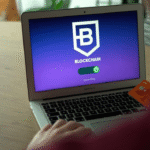In the ever-evolving landscape of cryptocurrency, Bitcoin stands as the undisputed pioneer, capturing headlines and investor attention alike. However, beyond the dominance of Bitcoin lies a vast and diverse ecosystem of alternative digital currencies known as altcoins. These altcoins, ranging from Ethereum to Ripple to Litecoin, offer unique functionalities and investment opportunities that extend beyond Bitcoin’s capabilities.
In this exploration, we delve into the world of altcoins, understanding their distinct features, evaluating their investment potential, and navigating the complexities of the digital asset market.
Understanding Altcoins
Altcoins, or alternative cryptocurrencies, encompass any digital currency other than Bitcoin. Bitcoin paved the way for decentralized digital currencies, and altcoins emerged with varied objectives and functionalities. Some aim to improve upon Bitcoin’s limitations, such as transaction speed and scalability, while others focus on innovative applications of blockchain technology beyond currency use cases.
Types of Altcoins
Smart Contract Platforms: Ethereum pioneered the concept of smart contracts, allowing developers to build decentralized applications (DApps) on its blockchain. Platforms like Ethereum, EOS, and Cardano facilitate the creation of DApps, enabling a wide range of decentralized services beyond simple transactions.
Privacy Coins: Privacy-focused altcoins, such as Monero and Zcash, prioritize anonymity and fungibility. They utilize advanced cryptographic techniques to ensure private and untraceable transactions, appealing to users seeking enhanced privacy and security.
Stablecoins: Designed to minimize price volatility, stablecoins like Tether (USDT) and USD Coin (USDC) are pegged to stable assets like fiat currencies or commodities. These digital currencies provide stability and serve as a bridge between traditional financial systems and the world of cryptocurrencies.
Utility Tokens: Many altcoins function as utility tokens within specific ecosystems or platforms. For example, Binance Coin (BNB) powers transactions on the Binance exchange, while Chainlink (LINK) facilitates data transfer between smart contracts and external sources.
Decentralized Finance (DeFi) Tokens: DeFi has emerged as a revolutionary movement within the cryptocurrency space, offering decentralized alternatives to traditional financial services. Tokens like Compound (COMP) and Uniswap (UNI) enable users to participate in lending, borrowing, and trading without intermediaries.
Examples of Altcoins
Let’s delve deeper into some prominent altcoins, each showcasing unique features and use cases within the cryptocurrency ecosystem:
1. Ethereum (ETH)
Ethereum stands as one of the most significant altcoins, often referred to as the “world computer” due to its ability to execute smart contracts and decentralized applications (DApps). Beyond its role as a digital currency, Ethereum enables developers to create and deploy decentralized applications across a wide range of industries, including finance, gaming, and decentralized finance (DeFi). With the upcoming transition to Ethereum 2.0, the network aims to address scalability issues and improve transaction throughput, further cementing its position as a leading platform for decentralized innovation.
2. Ripple (XRP)
Ripple offers a unique approach to cross-border payments and remittances, positioning itself as a bridge between traditional financial institutions and blockchain technology. The RippleNet network facilitates fast and low-cost international money transfers, leveraging its native digital asset XRP, as a liquidity solution. With partnerships with major banks and financial institutions worldwide, Ripple aims to revolutionize the global payments infrastructure, offering efficient and cost-effective alternatives to traditional remittance systems.
3. Litecoin (LTC)
Litecoin, often referred to as the “silver to Bitcoin’s gold,” shares many similarities with Bitcoin but distinguishes itself with faster transaction times and lower transaction fees. Created by Charlie Lee, Litecoin aims to facilitate everyday transactions and micropayments with its efficient and lightweight blockchain. With a strong community and widespread adoption as a digital currency, Litecoin continues to serve as a reliable medium of exchange and store of value for users worldwide.
4. Chainlink (LINK)
Chainlink addresses the critical issue of data connectivity between smart contracts and external sources, enabling secure and reliable data transfer on blockchain platforms. As the leading decentralized Oracle network, Chainlink ensures the integrity and accuracy of off-chain data, powering a wide range of decentralized applications across industries such as finance, insurance, and supply chain management. With its robust network of data providers and growing ecosystem of developers, Chainlink plays a crucial role in the expansion of decentralized finance and real-world blockchain applications.
5. Cardano (ADA)
Cardano is a third-generation blockchain platform designed to provide a secure and scalable infrastructure for decentralized applications and smart contracts. Led by a team of academic researchers and engineers, Cardano utilizes a layered architecture and peer-reviewed research to ensure high levels of security, scalability, and interoperability. With a focus on sustainability and inclusivity, Cardano aims to empower individuals and enterprises worldwide with decentralized financial services, identity solutions, and governance mechanisms.

Factors to Consider When Evaluating Altcoins for Investment
Technology and Use Case: Assess the underlying technology of the altcoin and its real-world applications. Look for projects with innovative solutions to existing problems or disruptive potential in their respective industries.
Market Demand and Adoption: Evaluate the demand for the altcoin and its level of adoption among users and developers. A growing community and active ecosystem indicate long-term viability and potential for appreciation.
Team and Development Progress: Research the team behind the altcoin and their track record in delivering on promises. Regular updates, partnerships, and progress in development milestones demonstrate the project’s credibility and commitment to innovation.
Security and Transparency: Consider the altcoin’s security measures, including the robustness of its blockchain and any past security incidents. Transparency in governance and decision-making processes also contributes to investor trust and confidence.
Regulatory Compliance: Regulatory scrutiny in the cryptocurrency space continues to evolve. Ensure that the altcoin complies with relevant regulations and avoids legal and regulatory risks that could impact its future growth.
Altcoins vs. Major Cryptocurrencies
While Bitcoin remains the dominant force in the cryptocurrency market, altcoins offer unique advantages and investment opportunities. Unlike Bitcoin, which primarily serves as a store of value and medium of exchange, altcoins cater to specific use cases and industries, fostering innovation and diversification within the digital asset ecosystem.
Investors seeking to capitalize on the potential of altcoins should conduct thorough research and due diligence, considering the aforementioned factors alongside their own risk tolerance and investment objectives. Diversification across a portfolio of altcoins can mitigate risk and capture opportunities across different sectors and technologies.

Embracing the Diversity of Altcoins
As the cryptocurrency market continues to mature, altcoins play an increasingly vital role in shaping its future trajectory. Beyond Bitcoin’s dominance lies a rich tapestry of digital currencies, each offering unique functionalities, use cases, and investment potential. By understanding the diverse landscape of altcoins and evaluating them through a strategic lens, investors can navigate the complexities of the digital asset market and position themselves for long-term success.
Staying informed about the ever-changing landscape of cryptocurrencies and real-world assets is crucial for making well-informed decisions. Kenson Investments is dedicated to providing you with the most recent updates, in-depth analyses, and educational resources. Our specialists offer comprehensive insights to help you navigate the digital asset market effectively. Join our community today and enhance your understanding to stay ahead in this dynamic field.
Disclaimer: The information provided on this page is for educational and informational purposes only and should not be construed as financial advice. Crypto currency assets involve inherent risks, and past performance is not indicative of future results. Always conduct thorough research and consult with a qualified financial advisor before making investment decisions.
“The crypto currency and digital asset space is an emerging asset class that has not yet been regulated by the SEC and US Federal Government. None of the information provided by Kenson LLC should be considered as financial investment advice. Please consult your Registered Financial Advisor for guidance. Kenson LLC does not offer any products regulated by the SEC including, equities, registered securities, ETFs, stocks, bonds, or equivalents”














